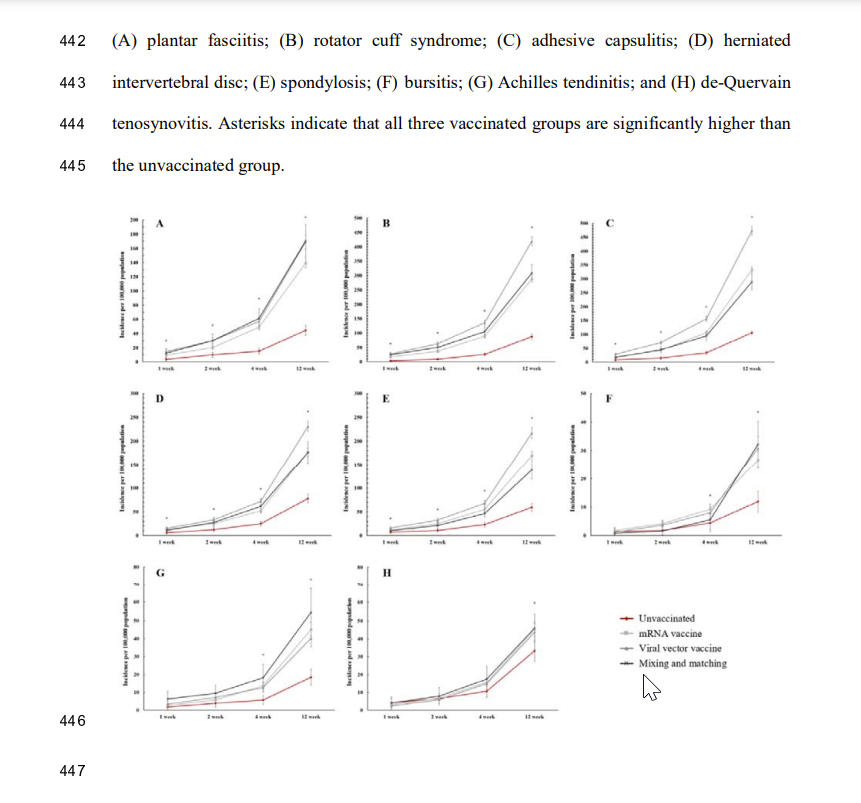
Yet more signals of systemic vaccine harms
All HART articles also on Substack. Please consider a PAID SUBSCRIPTION so we can continue our work. Comments are open so you can join in the conversation.
In September we wrote an article explaining that because the harms from the injections known as “covid vaccines” would manifest in inflammatory or autoimmune conditions, there is a risk that they may go unnoticed as the adverse events will be spread across many organ systems, as well as occurring over an extended period.
Of course, as the debate over the NZ leaked data shows us, what is really needed to disentangle harm from the injections from the theoretical harms from “covid” is data properly separated by vaccination status, with a reasonably sized cohort of fully unvaccinated individuals.
This is something which to date authorities have been reluctant to provide, even when requested under Freedom of Information laws.
However, a new series of studies from investigators at a University in Seoul has been published which does provide some interesting – and alarming – data. These have not yet been peer-reviewed but notably they are based on a cohort analysis carried out on millions of subjects in the Korean National Health Insurance Service (NHIS) database.
Three papers have so far been published, and these confirmed the quite alarming increases in inflammatory and immune conditions (in the vaccinated) which had already been reported to HART by doctors on the front line. A third study found increases in haematological disorders.
A high-level summary of the studies’ findings can be found here.
There are a number of points to be made about the studies:
- The cohort sizes are large: approximately 2m vaccinated and >300k unvaccinated.
- The age groups of the vaccinated and unvaccinated cohorts are significantly different, however it looks like this has been accounted for in the analysis since age is stated to be a covariate and the methodology is described as “multiple logistic regression analyses after adjusting for the covariates”.
- Moreover, subjects with the target conditions searched for were excluded from the cohorts analysed, which will substantially correct for any bias introduced thereby.
- Only those having 2 injections were included, the obvious question being: what made those who had only one injection refuse another?
- The follow-up period was only 3 months after the second dose so no data is included for any booster doses, yet side effects are considered by many to be cumulatively or synergistically worse the more doses given.
- As can be seen in the paper for inflammatory conditions, the gap between the cumulative incidence rate for the vaccinated groups and the unvaccinated is still widening at 3 months, which is the last time point reported. This must raise concerns about what happens afterwards, even without considering the impact of follow-up doses.

Though not all the diseases reported across these studies can be regarded as serious, many certainly are.
Moreover, the significance of these papers is that they strongly support the contention that – through whatever mechanisms – these injections significantly increase the incidence of a wide variety of harms across many body systems, especially those of an inflammatory or auto-immune nature.

